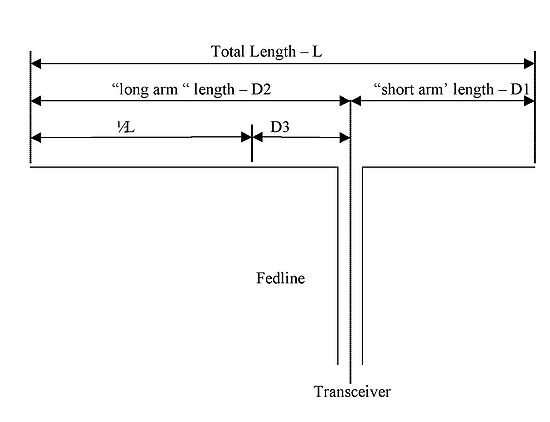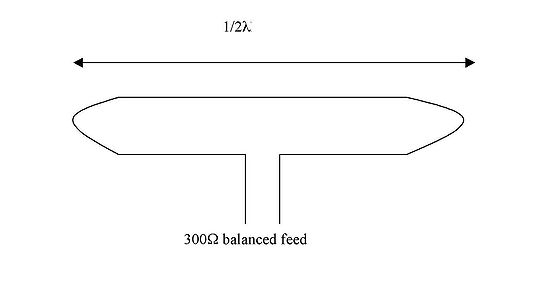Dipole: Difference between revisions
(added folded dipole) |
m (→G5RV dipole) |
||
| Line 31: | Line 31: | ||
== G5RV dipole == | == G5RV dipole == | ||
Whilst not strictly speaking a dipole like those described above, the G5RV - invented by Louis Varney - shares some physical characteristics with a centre fed dipole. | Whilst not strictly speaking a dipole like those described above, the G5RV - invented by Louis Varney - shares some physical characteristics with a centre fed dipole. The main difference between, a dipole and G5RV is that the "transmission line" of a G6RV is part of the radiating element, as well as being the matching section to allow operation over a number of bands. The G5RV was intended to be used with an antenna tuner. | ||
Excellent analyses of the G5RV can be found [http://www.cebik.com/wire/g5rv.html here] and [http://www.vk1od.net/G5RV/ here.]Philip Grimshaw - VK4KVK has a comprehensive book on the G5RV, available [http://www.grimshaw.net.au/vkg5rvhb.html here.] | Excellent analyses of the G5RV can be found [http://www.cebik.com/wire/g5rv.html here] and [http://www.vk1od.net/G5RV/ here.]Philip Grimshaw - VK4KVK has a comprehensive book on the G5RV, available [http://www.grimshaw.net.au/vkg5rvhb.html here.] | ||
Revision as of 16:36, 7 March 2008
Dipole antennas are "two sided' in that they are fed from a point between the two ends. In is simplest form, a dipole will be centre fed, with the total length being the same as the frequency of transmission.
Simple centre fed dipole
Dipole length for resonance is calculated using either:
<math>L = \frac {468}{frequency(MHz)}</math> for total length in feet, or,
<math>L = \frac {285}{frequency(MHz)}</math> for total length in metres.
Half wave dipole
These are centre fed, but each arm is one quarter of the wavelength of the operating frequency.
Off Centre fed dipole (OCF dipole)
As the name suggests, the OCF dipole is not fed from the centre.
L is calculated from the formulae above. The dimensions D1, D2 and D3 are found using:
<math>D1 = 0.38L</math>
<math>D2 = 0.62L</math>
<math>D3 = 0.14L</math>
G5RV dipole
Whilst not strictly speaking a dipole like those described above, the G5RV - invented by Louis Varney - shares some physical characteristics with a centre fed dipole. The main difference between, a dipole and G5RV is that the "transmission line" of a G6RV is part of the radiating element, as well as being the matching section to allow operation over a number of bands. The G5RV was intended to be used with an antenna tuner.
Excellent analyses of the G5RV can be found here and here.Philip Grimshaw - VK4KVK has a comprehensive book on the G5RV, available here.
Dipole variants
Folded dipoles are commonly used on FM repeaters on VHF bands. the impedance of these antennas is about 300oms, allowing them to be fed with a 300ohm balanced line.
The advantage of a folded dipole is that it provided broad band coverage.
"Rabbit ears" dipoles are commonly used for TV reception. The position and length of the dipole arms can be adjusted to optimise reception.


